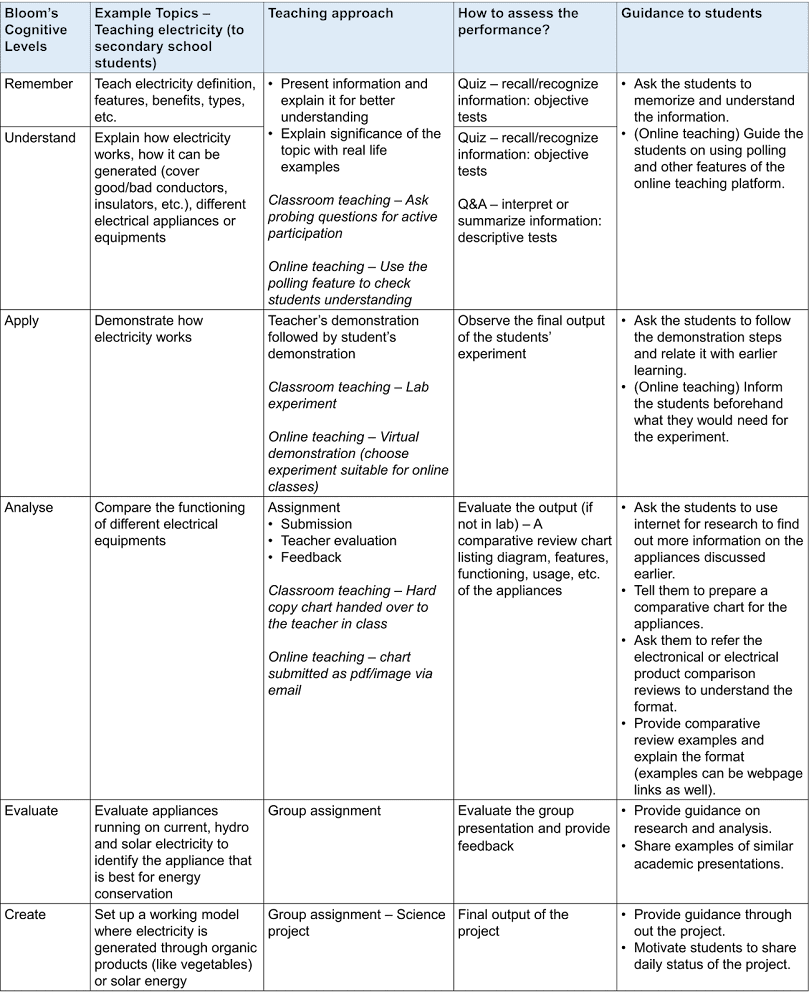Mapping Teaching Approach with Bloom’s Cognitive Levels for Structured Learning
In this digital age, a teacher needs to invent and re-invent the teaching practices to adapt to the changing learning patterns. A systematic instructional approach and a growth mindset can facilitate learning. Bloom's taxonomy can be a good starting point for defining teaching or instructional approach for structured learning.
This is the reason why I choose to write on this topic. Using a simple example, I'll discuss how a teacher can use Bloom's taxonomy to ensure learner's growth from Lower Order Thinking Skills (LOTS) to Higher Order Thinking Skills (HOTS). Before going to the example, I'll briefly cover Bloom’s old and revised taxonomy and the action verbs associated with it, including Bloom's digital taxonomy verbs.
Let's get started...
Introduction
 |
| PC: Wiki Photo Library |
Benjamin Samuel Bloom (Feb 21, 1913 – Sep 13, 1999) was an American educational psychologist who reconstructed the objectives of teaching practices.
His pioneering work is popularly known as "Bloom’s Taxonomy" (published in the year 1956). It is a systematic framework defining cognitive levels of learning. The taxonomy is widely used as an effective educational tool even today though there are some debatable opinions about its scientific validity.
Bloom’s Taxonomy
Bloom's Original Taxonomy (1956)
Bloom's Revised Taxonomy by Anderson and Krathwohl (2001)

Bloom's Old vs. Revised Taxonomy

In the revised model, cognitive levels 5 and 6 are interchanged.
Bloom's taxonomy defines six cognitive levels. It mentions the cognitive skill a learner needs to master at each level. In a way, it helps us to decide what performance the learner needs to demonstrate at each level. A teacher can adapt to an instructional approach that takes the learners from lower-order thinking skills (Remember, Understand and Apply) to higher-order thinking skills (Analyse, Evaluate and Create).
The model is usually shown as a pyramid with the cognitive levels arranged as linear hierarchy basis their complexity. As we see in the revised taxonomy diagram, the cognitive level “Create” (innovation) is placed at the top of the pyramid since it is the most complex level involving critical thinking. It forms the tip of the pyramid and occupies a small area. This can be considered as a symbolic way of depicting that only a few learners can achieve it. On the other hand, the easiest level that requires the least thinking and involves only recalling “Remember” is at the bottom occupying the maximum area in the pyramid. This depicts that many learners can achieve this cognitive level.
Bloom’s taxonomy is used to:
- Write the learning objectives
- Decide the teaching or instructional approach
- Write the assessments (aligned to the learning objectives)
We
can check examples of the action verbs associated with each of the cognitive levels. These actions
verbs are used to write learning objectives specific to a cognitive level. The action verbs express actions that can
be quantified. The output of these actions can be measured by way of tests or
assessments.

With the virtual or online teaching trend, a need for adapting Bloom’s taxonomy for digital learning became essential. This led to defining digital action verbs for each of the cognitive levels. (Note: This write up just introduces the digital verbs. A detailed exploration would need separate deep dive.)
 |
| Bloom's Digital Taxonomy Action Verbs |
Bloom’s Taxonomy-based Teaching and Assessment Approach
Using an example, I have explained how a teacher can teach and assess the performance of the students with reference to Bloom's taxonomy. As the students move to the higher cognitive levels, the teacher can become more of a facilitator. He/she can motivate and guide the students to apply their learning, make a decision or create something new.
Example – Academic Education: Teaching Science in High School
 |
Table by Madhuri Shinde; ©2021 The Pathashala Times |


Comments
Post a Comment